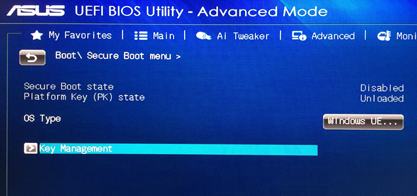

You can control Secure Boot from your UEFI Firmware Settings screen. See the last section for instructions on booting from a removable device. You should be able to install current versions of Ubuntu - either the LTS release or the latest release - without any trouble on most new PCs. If you need to boot an older Linux distribution that doesn’t provide any information about this, you’ll just need to disable Secure Boot. You should check to see which process your Linux distribution of choice recommends. This doesn’t seem to be a common at the moment.


You have several options for installing Linux on a PC with Secure Boot: Organizations could use their own keys to ensure only approved Linux operating systems could boot, for example. You can choose to disable it or even add your own signing key. On an Intel x86 PC (not ARM PCs), you have control over Secure Boot. Secure Boot blocks this - the computer will only boot trusted software, so malicious boot loaders won’t be able to infect the system. The computer’s BIOS would then load the rootkit at boot time, which would boot and load Windows, hiding itself from the operating system and embedding itself at a deep level. This feature is known as “Secure Boot” or “Trusted Boot.” On traditional PCs without this security feature, a rootkit could install itself and become the boot loader. By default, the machine’s UEFI firmware will only boot boot loaders signed by a key embedded in the UEFI firmware. PCs that come with Windows 8 and Windows 8.1 include UEFI firmware instead of the traditional BIOS.


 0 kommentar(er)
0 kommentar(er)
